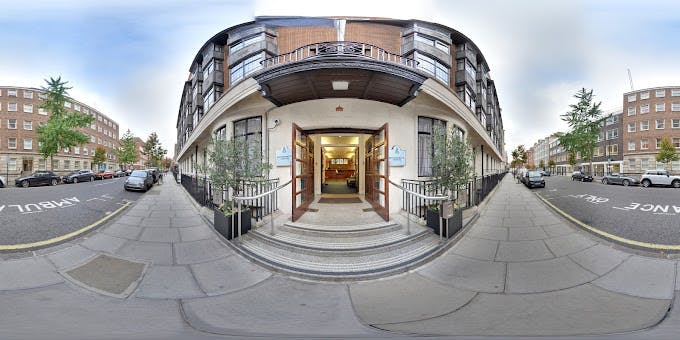Have You Been Diagnosed With A Hiatus Hernia?
Hiatus hernias often cause reflux symptoms and tend to get worse over time.
Get in touch with RefluxUK to enquire about starting treatment.
Make An Enquiry About Hiatus HerniasA hiatus hernia occurs when you get an enlargement of the hole (or hiatus) in the diaphragm, which the oesophagus passes through to reach the stomach.
This can cause part, or all, of the stomach to enter the chest. In most patients with a hiatus hernia, the stomach moves up and down through the hiatus; these are called ‘sliding’ hiatus hernias and are the most common.
This can cause symptoms such as a burning pain in your chest, regurgitation of liquids and solids, as well as belching, coughing and many other problems.
If you’ve been diagnosed with a hiatus hernia, changes to lifestyle, diet, and medication (such as PPIs) can alleviate the symptoms for a short time but are not long-term solutions, especially as hiatus hernias often get progressively worse.
Types of Hiatus Hernia
Type 1 (sliding hernia):
- By far the most common, the stomach and oesophagus “slide” up into the chest through the hiatus.
Type 2 (rolling hernia):
- These are more rare and the oesophagus doesn’t move, but the stomach rolls up into the chest beside the oesophagus; this can cause pain as well as reflux symptoms.
Type 3 (para-oesophageal hernias):
- Both stomach and oesophagus move up into the chest and in some cases, which develop over time, the whole stomach can end up in the chest.
Type 4:
- These are very rare and include other organs from the abdomen such as the small bowel, colon or pancreas.
In Types 2, 3 and 4, in addition to reflux, the stomach may twist or become stuck in the chest causing difficulty eating or even acute pain and “strangulation” when it suddenly loses its blood supply causing a surgical emergency. This is rare but an occasional cause of death.
The image on the left shows (from left to right) a normal hiatus, a type 1 (sliding) hiatus hernia, a type 2 (rolling) hiatus hernia and a type 3 (sliding and rolling) hiatus hernia.


Get in touch with an expert
Fill out a simple contact form and we'll get back to you with next steps.
Get in touchTreatment for Hiatus Hernias
RefluxUK’s specialist surgeons perform several surgeries to fix hiatus hernias, allowing significant recovery and improve quality of life. Not all hiatus hernias need surgery, but if medications don’t help, then surgery will offer the best chance of long-term improvement.
Regardless of the anti-reflux surgery, repair of the hiatus and surrounding muscles are an essential component of any successful reflux operation.
There are several anti-reflux surgery options, both laparoscopic (keyhole) and endoscopic (incisionless). The main one used in the NHS is a fundoplication – the traditional anti-reflux surgery. However, in recent years, new surgeries have been found to produce at least equally good outcomes, if not better. These include LINX® and RefluxStop™ for laparoscopic surgeries, as well as endoscopic surgeries such as TIF®️ (Transoral Incisionless Fundoplication) and the Overstitch.









